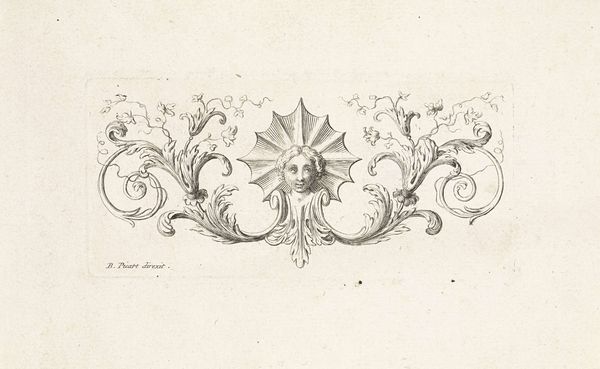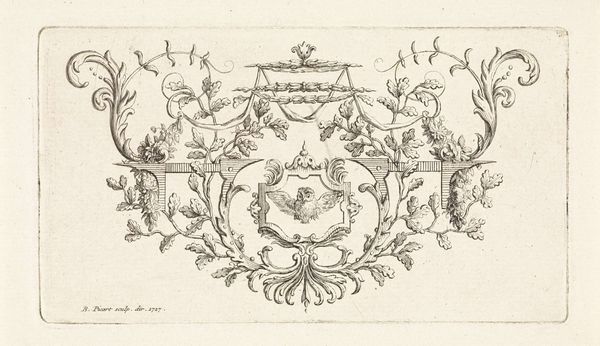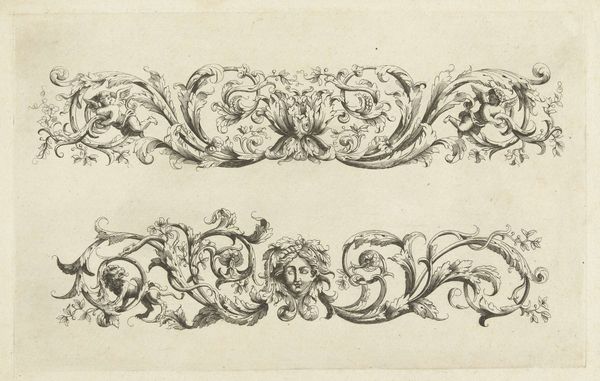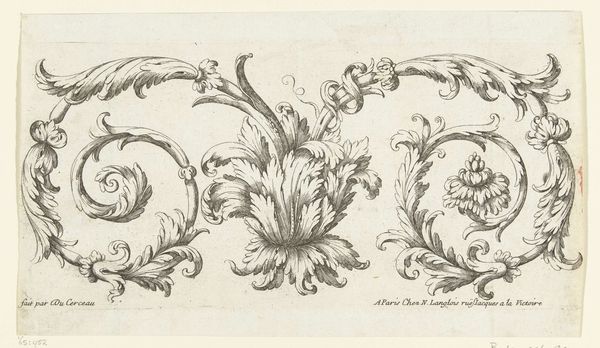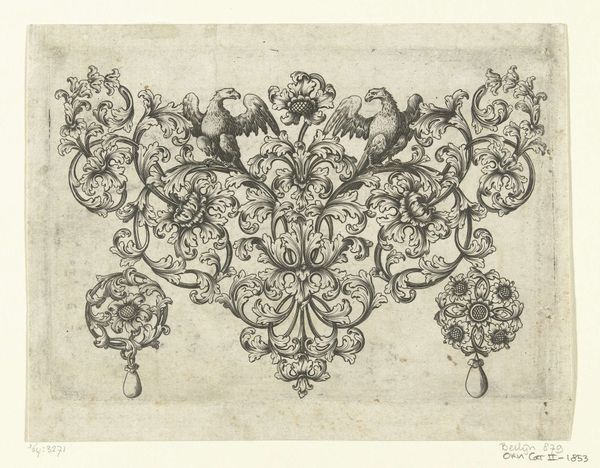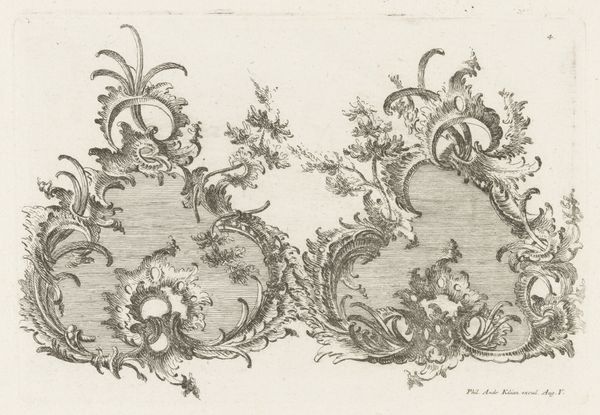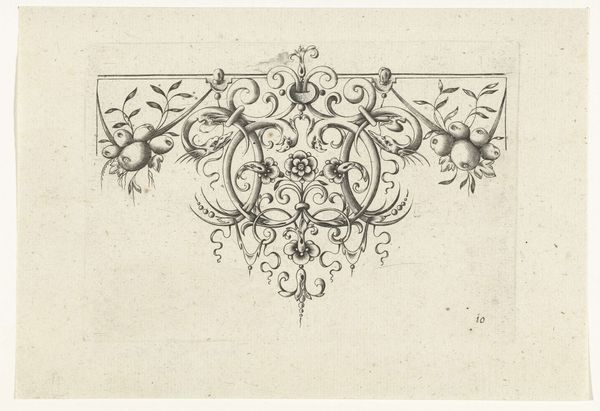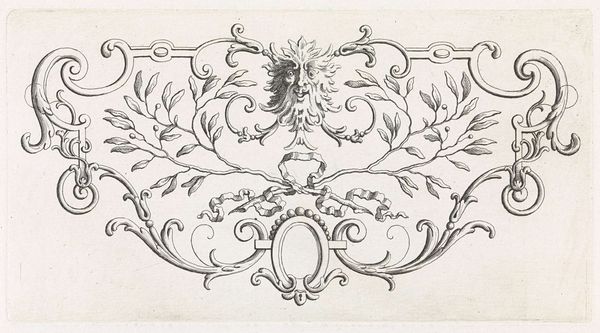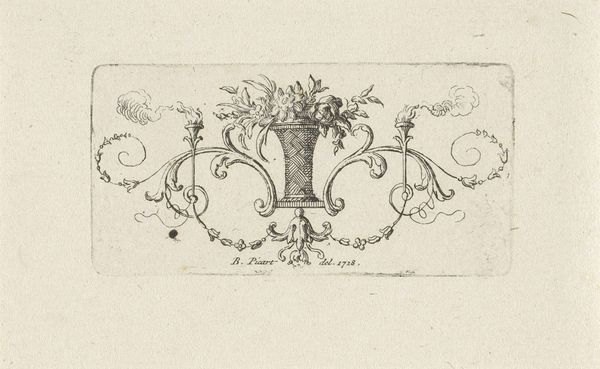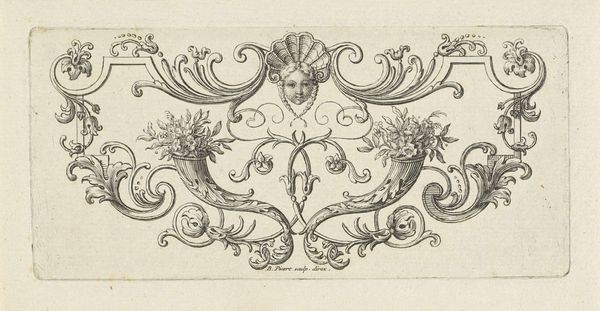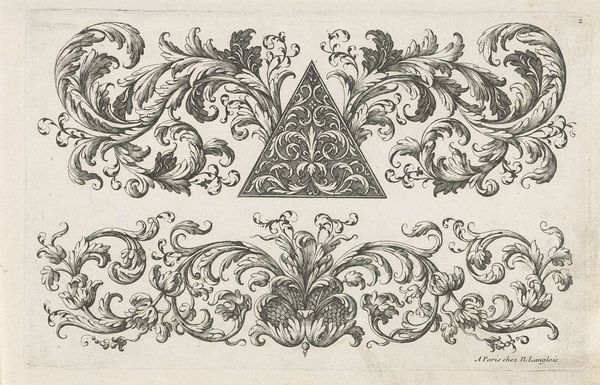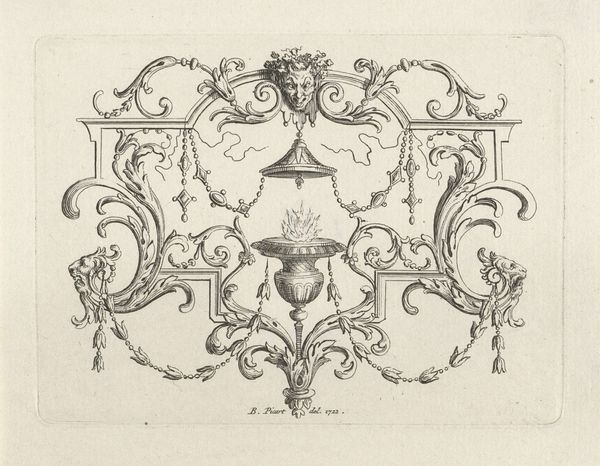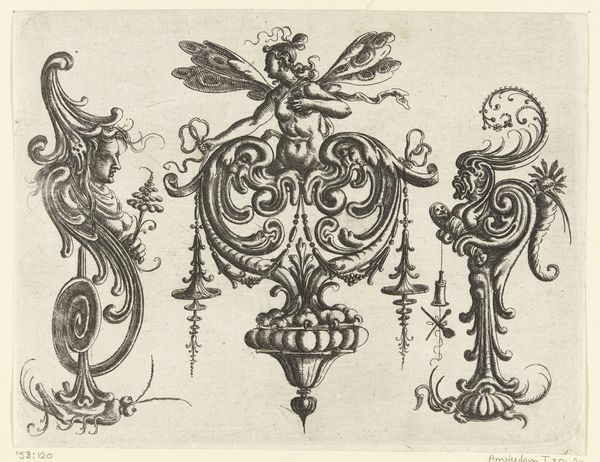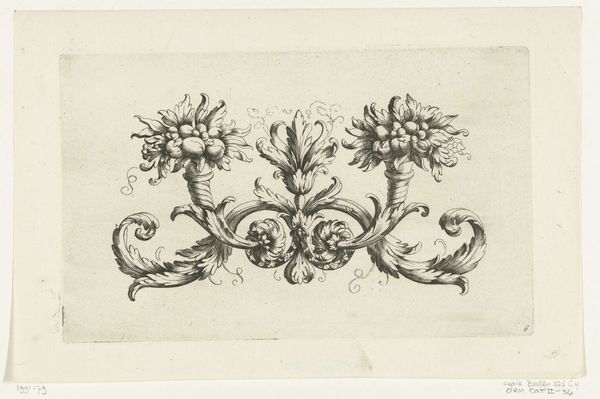
Ornament met een mascaron omgeven door bladranken twee hoorns met planten en bloemen 1683 - 1733
0:00
0:00
bernardpicart
Rijksmuseum
ornament, print, engraving
#
ornament
#
baroque
# print
#
pen sketch
#
old engraving style
#
line
#
decorative-art
#
engraving
Dimensions: height 51 mm, width 103 mm
Copyright: Rijks Museum: Open Domain
Editor: So, we're looking at "Ornament met een mascaron omgeven door bladranken twee hoorns met planten en bloemen," created between 1683 and 1733 by Bernard Picart. It's an engraving, and what strikes me is how meticulously the lines are etched. How do you approach this piece, given the materials used? Curator: The choice of engraving, specifically, is quite telling. We need to consider the labor involved. Each line represents a deliberate act of the hand, pressing into the metal. This wasn't some spontaneous gesture. This was skilled work, likely produced for a specific client, who in turn intended to profit from Picart's skills by printing for wide-scale distribution, not necessarily just a patron, or the elite, but instead focusing on quantity for return on investment. This print democratized luxury by rendering ornamentation and artistic skills accessible via consumption to a large sector of the population that would never afford this style if not for this print-making system. Editor: So you're focusing on how the printmaking process makes the design accessible to a broader audience? Does that then challenge the traditional boundaries between fine art and craft? Curator: Precisely. Think about it: the "high art" world often looks down upon decorative arts, seeing them as mere craft, but consider what's going on here. We see skills employed, but with less value as "fine art." This engraving exists as both a tool and product of production and can lead into wider reflections upon other class or consumption-based assumptions. The materiality—the ink, the paper, the metal plate, all consumed and transformed in this repetitive mechanical operation. Does that resonate with you? Editor: It does. It makes me think about the economics behind art, beyond just the aesthetic appeal. Now that you say it, this reminds me a bit of certain conceptual approaches today, where the idea and labor is part of its intention. Curator: Exactly. The artwork becomes not just the image but also a record of process and economic exchange. Hopefully, this engraving and discussion highlights ways that even works seemingly trapped in history can participate in critical dialogues on our own relationship to materiality and the culture of consumption that underpins a materialist world. Editor: That gives me a completely new way to appreciate what's going on in the work; the intention behind creating it beyond decoration.
Comments
No comments
Be the first to comment and join the conversation on the ultimate creative platform.
